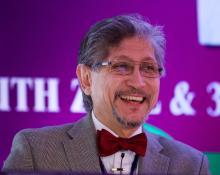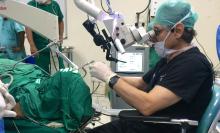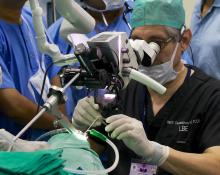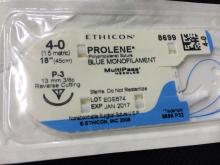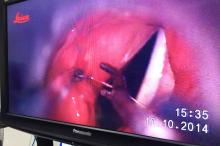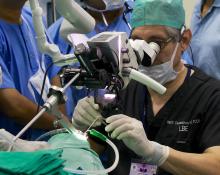Attending “AOICON 10th South Zone & 32nd Karnataka State Annual Conference 2014” in Bangalore, October 10-12, 2014 as faculty, the meeting is fascinating for many interesting ideas. In particular, the internal approach to repositioning of the arytenoid by Paul Castellanos opened my eyes to a new method of laryngeal framework surgery.
Paul’s idea for altering the larynx consists of entering the vocal cord by a microlaryngeal incision through the aryepiglottic fold - false cord junction. Cutting cleanly with a programmable CO2 laser, a pocket is created and the arytenoid can be maneuvered. Up against the inner thyroid cartilage, the thyroid perichondrium can be used as an anchor point for sutures. The interior of the true vocal cord can be entered. Silastic can be placed (perhaps with a slightly higher risk of extrusion than through an external approach. The vocal process can be rotated medially or laterally and anchored into a particular medial or a lateral position. He also uses the superior cornu of the arytenoid along with corniculate cartilage as a local donor flap for replacing the mass of the true vocal cord.
One of the keys to the procedure is the suturing technique. He utilizes 4-O sutures on P-3 needles (13 mm diameter 3/8 of a circle curved reverse cutting): 4-O Proline for permanent placement, 4-O monocryl for absorbable mucosal closure, and sometimes PDS.
After placement of typically a figure 8 suture, when he is ready for closure, he uses a clip applier, partially clamping the clip, then moving the clip down the tensioned suture before locking it in place.
The suture is trimmed with the laser and this spares him the art of knot tying in the narrow tube of the laryngoscope. He tends to use the Lindholm laryngoscope which has a wide aperture for bimanual manipulation of instruments.
I’ll be giving this new trans-oral laser approach a try.

